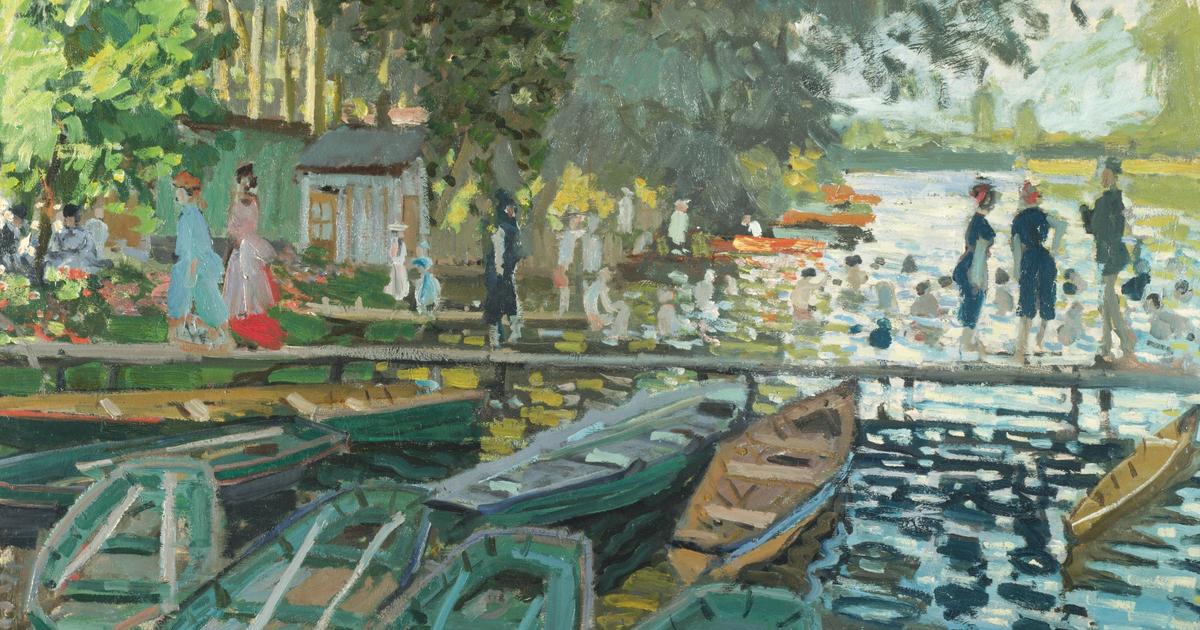This article is taken from the
Figaro Hors-série Paris 1874, Impressionisme-Soleil levant,
a special issue published one hundred and fifty years after the first impressionist exhibition commemorated by the Musée d'Orsay which brought together, in a striking face-to-face, a wide selection of works which were then revealed to the public. To keep up to date with historical and cultural news,
subscribe free of charge to the Lettre du
Figaro Histoire
.
This year, the Show was very severe. Bazille wrote to his parents:
“The jury caused great carnage among the paintings of the four or five young painters with whom we got along well. I have only one painting received: The Woman (The Village View). (…) What pleases me is that there is real animosity against us. It was Mr. Gérôme who did all the harm; he called us a bunch of crazy people and declared that he believed it was his duty to do everything to prevent our paintings from appearing. »
Manet,
“whom we no longer dare refuse”
, exhibits The Balcony and The Luncheon in the studio. But Monet, Sisley, Cézanne are totally excluded. Monet is
“more unhappy than ever”
. Times are tough and money is tight. Bazille returns to the South with the drawings of his naked men which will become his Summer Scene. Deeply discouraged, he remains deaf to the calls for help from his friend who asks him for money:
“we are dying of hunger, and that is literally”
. Monet is furious. Oh, not against his friend, who does what he can and has always been faithful. No. But against the pusillanimity of art dealers, against the obtuse intransigence of judges of painting, against the sheepish blindness of the bourgeois, this... Scales on the eyes! They therefore do not know how to see, to admit what is true and alive, and which dances, changes and laughs!
Also read: Michel De Jaeghere: “Impressionism, an aesthetic revolution in the shadow of the old masters”
Camille does not complain, eternally patient, she makes their little boy jump on her lap: Jean will be two years old. And Monet redoubles his anger and shame at not offering them a decent and safe life. So he goes to find Renoir, who is experiencing the same agonies, always ready to understand, to support, to laugh. Together they go to the banks of the Seine to look for the transparency of the summer light which dissolves all forms in a shimmer of green and blue colors. Way to stick together. Their art has never been as close as that summer. They went to set up their easel and canvas near La Grenouillère, this large floating café where Paris slums. Covered with a tar roof supported by wooden columns, it is connected to the island of Croissy by two footbridges. One of them communicates with this tiny islet planted with a tree which we call the Flower Pot, and near which we bathe. On the almost still water, boats of all shapes glide, which bare-armed boaters maneuver while whistling. Boating is in fashion and so are taverns. The banks of the river are covered with people waiting for the ferryman and his ferry to reach the café. There we shout, we dance, we drink, we heckle. Maupassant, a loyal customer, delights in the picture of this rowdy and rogue society:
“Because we smell there, with full nostrils, all the foam of the world, all the distinguished villainy, all the mold of Parisian society: mixture of calicoes, of histrionics, of petty journalists, of gentlemen in guardianship, of crooked stock traders, of crazy revelers, of rotten old drunks; interloping crowd of all the suspicious beings, half-known, half-lost, half-greeted, half-dishonored, thieves, scoundrels, women's attorneys, knights of industry with a dignified appearance, with a mamamore air that seems to say : “The first one who calls me a scoundrel, I’ll kill him.” »
Side by side, the two friends paint the Flower Pot from the same point of view, then the footbridge which leads from the Flower Pot to the island, and the crowding of rowboats ready for the stroll. In both, the touch takes precedence over the line, fragmented and moving, abbreviates the drawing to suggest the moment, the movement of distant and anonymous silhouettes, as if melted into the landscape of nature, trees and water, crushed by the humid sun. This aesthetic of the fugitive, of the moment which is already transformed, this rapid, sensitive and sensual expression of a fleeting moment, is impressionism which was invented, five years before the letter, under the brush of two companions of misfortune.
Print, Rising Sun
by Claude Monet Marmottan Monet Museum, Studio Baraja
Paris 1874. Impressionism, rising sun,
Le Figaro Special Edition
. €14.90, available on newsstands and on Figaro Store.

